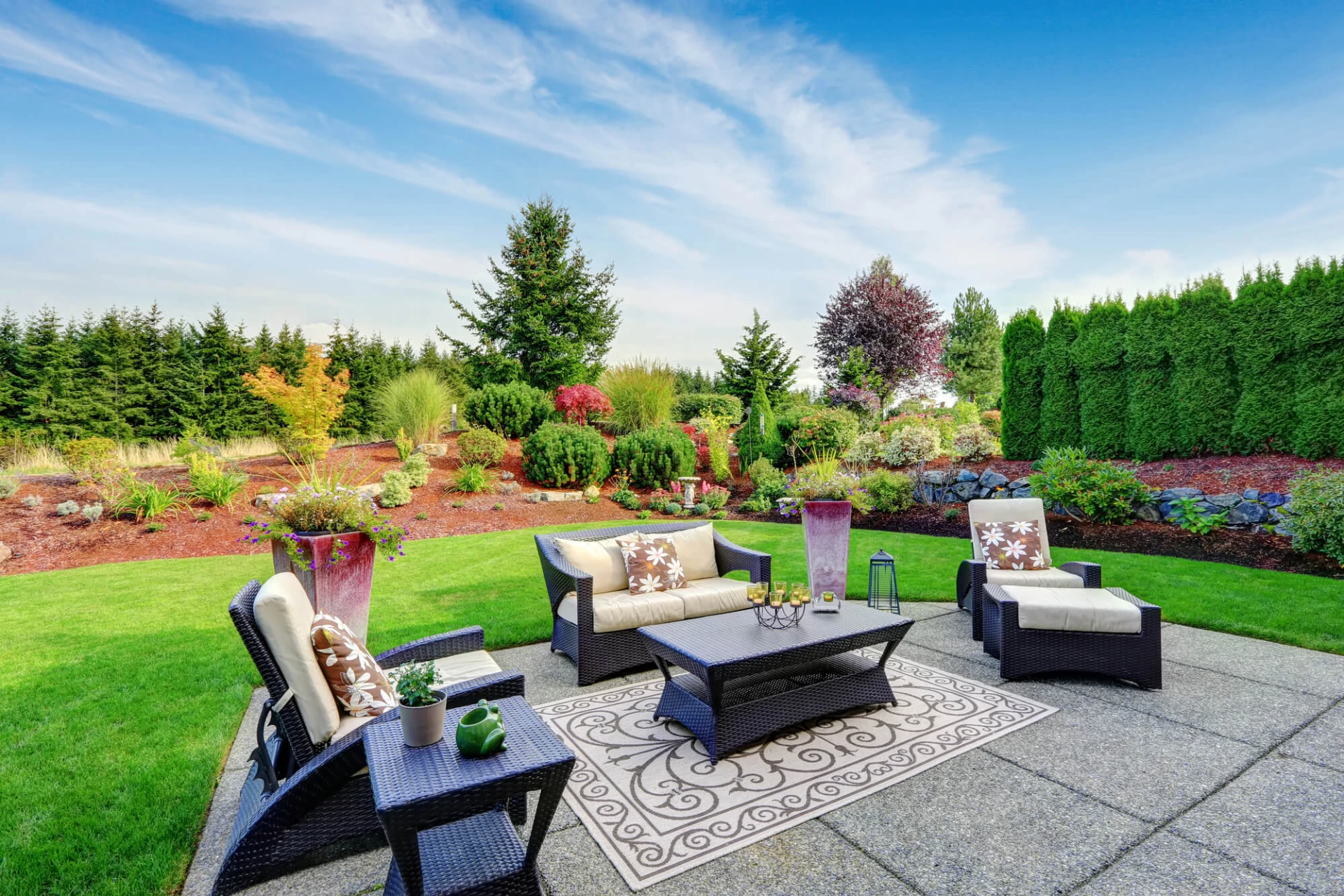Are you looking for ways to spruce up your backyard this spring? Perhaps you’ve been putting off adding landscaping to your backyard design because it seems like a really big project and you don’t want to start it without having a good idea of what your end goals are for the area.
Landscape and outdoor maintenance play a very important role in your home’s aesthetic appeal and can influence how your home is perceived by guests when they first visit your house.
As you consider adding backyard landscaping to your home, it’s important to decide which elements are most important to you and your outdoor aesthetic goals and consider any limitations you might face when making your outdoor alterations.

If you have a smaller backyard, consider adding elements that will expand rather than clutter your space. On the flip side of that, if you have a large backyard you will want to find complementary elements to place strategically throughout your backyard to accentuate the angles or emotion you want to achieve.
Here are some of our landscaping tips to start you out:
1. Find Other Landscapes That You Like
First things first, look up other backyard landscapes online and find some designs that you like. This will give you an idea of what design style appeals to you, allowing you to be more clear with the landscaping crew when the time comes to make the alterations.
Most likely your design style has a name on it, so a bit of reading and research will help you discover what plants, elements, and colors are best suited to you and your backyard.
2. Prioritize
List the elements you wish to add to your backyard in order from most important to least. Adding landscaping to your backyard is an investment — one which will take time to fully complete — but you should be starting with your favorite elements and working down the list of prioritizes that way.
3. Do what is Comfortable
If you spend a lot of time in your backyard or enjoy entertaining the company outside, it’s important to use a landscape design that prioritizes comfort. Consider adding functional, beautiful yard furniture, or a covered patio to enhance the comfort of your space and give it a cozy, home-like feel.
Comfort is very important in backyard landscape design, especially for homeowners that enjoy entertaining during the warm summer months, so be sure to add a level of comfort to you outside space along with the stylish design features.
4. Add the Main Feature
Consider adding a rockery design, a water feature, fire pit, or a stone patio to draw the eyes to a focal point in the yard. Having a focal point in your backyard will give you a center that you can design around and will give your yard a beautiful aesthetic look and feel. Adding a custom stone fireplace is a cozy addition for a summer-nights cookout or s’mores toasts with your guests.
5. Add a Theme to Your Backyard Design
Consider going for a landscaping theme. You can use specific plants, shrubs, or stone elements creatively to give your yard a nice, cohesive feel. You can even consider bringing your home decor theme into your backyard, this will help your house and yard to be fully cohesive and complementary in style.
You might not know what your indoor decor theme is, if this is the case, take a walk around your house and pay close attention to your decor details and design choices. It might take a bit of looking, but most likely you will see a pattern of repeated elements and style choices. Once you’ve pinned down your style, it will be easy to know what sort of theme you should go for with your landscape design.
6. Create Crisp Edges
Lawn edging or utilizing retaining walls is a wonderful way to create angles and edges that look crisp and define different areas of your backyard. If you want to have multiple areas in your backyard that serve different purposes, having clean-cut edges is a good way to separate and organize your backyard landscape. Likewise, working with retaining wall contractors can improve the aesthetic of your backyard and can also be useful in keeping dirt from eroding and sliding down into your yard or garden bed.
7. Get Creative!
Many homeowners associate backyard landscape design with plants, trees, and shrubs only — completely missing the many other elements that can be present in a beautiful backyard design. Stone and rockery elements can add a nice touch to the greenery and life in your backyard and can really enhance the natural colors present. Getting creative and utilizing all of the elements available to you will help you have a beautiful backyard that you love and that is designed perfectly to suit your needs and aesthetic desires.
8. Utilize Pots and Planters
Pots and planters make beautiful additions to backyard design and are also extremely practical if you are a gardener or love the look of potted plants and shrubs. Take a trip down to your local home and gardens store to purchase some beautiful pots or consider having rock or brick planters built for certain areas in your backyard.
As you can see, there are many ways to enhance your backyard aesthetic through landscape design. No matter what your design style or aesthetic taste, there will most certainly be backyard landscape designs that appeal to you.
9. Work With A Skilled Landscaper
If you need any assistance with backyard design or landscaping tips, contact New Life Rockeries for expert landscaping contractor advice and services. New Life Rockeries is a landscape and stoneworks company that has been faithfully helping Washington homeowners achieve their ideal backyard landscaping goals for more than 35 years. Let us be the ones to create the perfect backyard for your home.
